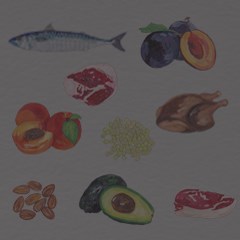Taste is more than a sense, it is a powerful emotional manipulator. Whether it’s the rush of superlatives that accompany a sip of expensive wine, or the secret pleasures of stolen chocolate, our sense of taste can trigger a wide array of behaviors and feelings.
From the most committed gastro-snob to the harried eat-and-run type, food has the ability to drive us all to extremes. And this link between food and emotion is hardly trivial. It’s deeply rooted in who we are and how we live our lives – including our attitudes to diet and nutrition.
The joy of food begins at birth. Babies quickly learn to separate good (sweet and salty) from potentially dangerous (bitter, sour and spicy). This is because our tongues are littered with receptors that distinguish between tastes, from repellent to desirable.
As children we love sweet food, with all our tastes receptors working on hyperdrive. This is an important survival adaptation, as kids have small stomachs, relative to their energy and growth needs. They need concentrated energy, and a great form of energy is sweet foods.
Because children have heightened tastes, even something with a mildly bitter edge, such as brussels sprouts, can have them reacting with horror. But as the years pass, we change. We might even begin to crave the burn of chilli sauce and the bitterness of coffee.
This is a combination of our taste receptors becoming dulled by the complex lessons that come from foods with mildly addictive properties. The buzz of coffee is a powerful stimulant that keeps us coming back, despite its bitter taste. Pain is also, rather strangely, mildly addictive. The painful pleasure of spicy food means many people crave increasingly incendiary curries and chilli sauces.
The taste buds of the tongue are hardwired through many nerve highways into the brain. The nerves that start in the tongue become entwined and connected with other sensory nerves that originate in the nasal passages and the pressure sensors from the mouth.
In response to the smell and taste of food the temporal lobe of the cerebellum (the large reasoning and sensory part of the brain) becomes activated. Like a Christmas tree lighting up, the neural messages converge, sending jolts of electricity from the temporal lobe to other parts of the brain, including those that regulate speech, are linked to emotions and, importantly, those related to memory. It only takes a mouthful of some foods to trigger complex sensations and emotions.
These neural triggers are not always positive; food can trigger unhappy and painful memories just as easily as producing a warm glow. It’s not surprising, then, that taste is a seriously powerful part of our being.
Because of the role of taste and the complexity of the brain’s responses, eating healthily means being neither a slave to your tastes, nor ignoring the important connections between your tastes buds and what makes you you.
It sounds obvious, but the truth is too many people are drawn to simplistic eating solutions that promise health, beauty and weight loss, if they only eat (or drink) an exacting and often limited diet.
So before embarking on a dietary path that can sometimes lead to misery, it’s important to acknowledge the important role of taste. If you’re trying to stick to a healthy eating strategy, here are a few important tips to remember.
- Understanding and harnessing the power of the deep-rooted connections between taste and our behaviors is never going to be solved by a ‘one fits all’ eating plan. Analyzing your own food vices, and the links between these foods and your emotions, is huge leap towards developing a healthy eating strategy.
- Any plans for healthy eating will soon unravel if they revolve around eating tasteless, unappetising and boring foods. It’s a recipe for disaster! Research has repeatedly shown that people who have healthier diets focus on how they can add healthy foods that are also enjoyable. Think of the amazing array of fruits, nuts and crunchy vegetables that are on offer at any supermarket. Plan ways you can eat more salads for main meals and fruit for snacks.
- There are, however, times to turn your taste buds to ‘max’ and enjoy. Rather than suppressing your taste and emotions, give thought to turning your tastes towards the gourmet and exotic. Take the time to enjoy the occasional spectacular restaurant creation, the richest chocolate or the best artisan cheeses.
- The big question is, how occasional is occasional? Take stock and ensure your indulgences are truly the exception, not the everyday. They’ll probably taste better for it, too.







